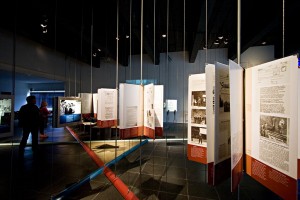 There are places that are of such historical significance that it makes you hold your breath and contemplate. Berlin is such a place. The city has played a vital role in many of the worldwide political happenings of the 20th century, and has been the place of both unbelievable sadness as well as boundless joy. The cruel, inhuman regime of the Nazi, the splitting of the country into the Federal Republic of Germany and the German Democratic Republic, the cold war, the fall of the Berlin Wall, reunion of Germany and the crumbling of the Eastern Bloc – Berlin was often right in the center of the events that marked the 20th century.
There are places that are of such historical significance that it makes you hold your breath and contemplate. Berlin is such a place. The city has played a vital role in many of the worldwide political happenings of the 20th century, and has been the place of both unbelievable sadness as well as boundless joy. The cruel, inhuman regime of the Nazi, the splitting of the country into the Federal Republic of Germany and the German Democratic Republic, the cold war, the fall of the Berlin Wall, reunion of Germany and the crumbling of the Eastern Bloc – Berlin was often right in the center of the events that marked the 20th century.
When you stroll through the city today, these historical traces can still be witnessed in many places. The markation line of the former Berlin wall runs through the city, with original remnants of the wall being visible in some places. Museums decicated to the devision of Berlin and Germany can be visited and provide a shocking glimpse into the life on both sides of the wall between 1961 and 1989. There are places of interest at former border crossings, most famously the “Checkpoint Charlie” at Friedrichstraße. In the eastern part of Berlin, you can still see countless traces of the former GDR, in architecture, sculptures, remnants on literally every street corner. Travelling through the city is like travelling through German history.
And then there is the new Berlin. After the reunion, and especially after Berlin has become the German capital in 1990, the face of the city changed drastically, and still continues to do so. In many cases, the new developments refer to the city’s split past. The impressive row of buildings in the new parliament district – just north of the renovated Reichstag with it’s new glass dome – form a line called “Band des Bundes” (“Ribbon of Government”), which crosses the river Spree twice, and in this crosses the former border between East and West Berlin which was located along the river at this place, thus symbolically linking both parts of the city – and Germany.
At Potsdamer Platz, just a few blocks south of the parliament district – passing by the famous Brandenburg Gate and the exceptional new “Memorial for the Murdered Jews in Europe” – an entirely new quarter was built right on the former border. During the splitting of the city, this area was a no man’s land between East and West Berlin. After the reunion, a new quarter arose from these fields, which today forms a new city center and attracts countless people each day – inhabitants and visitors alike. Impressive high-rise buildings gather around the large plaza, on which the former line of the Berlin Wall is marked.
Despite the cosmopolitan atmosphere and all the new developments that are happening, you can still feel the spirit of a difficult century in Berlin. Walking through the city, especially when you pay attention to the signs and remnants of the past and learn from the information provided at key points, you just can’t help feeling a bit dizzy from everything that this city has gone through. And this key to the Berlin experience: A visit to the city is a trip into the past of this country, and you take home something a lot more valuable than the usual holiday impressions (and sounvenirs): A free lesson in history and a deep insight into the past century.